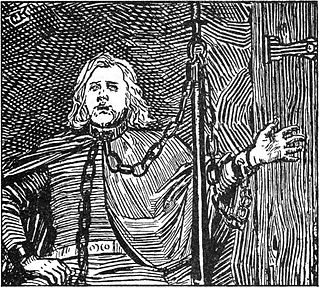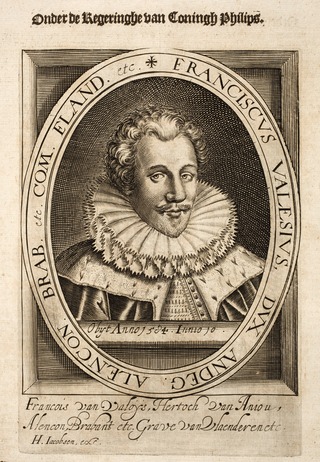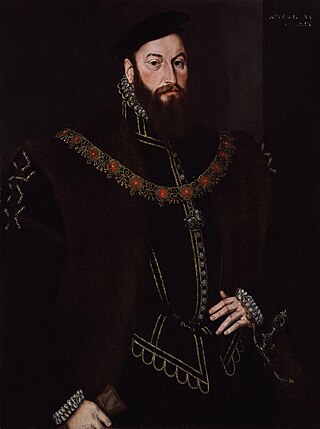
1631 (MDCXXXI) was a common year starting on Wednesday of the Gregorian calendar and a common year starting on Saturday of the Julian calendar, the 1631st year of the Common Era (CE) and Anno Domini (AD) designations, the 631st year of the 2nd millennium, the 31st year of the 17th century, and the 2nd year of the 1630s decade. As of the start of 1631, the Gregorian calendar was 10 days ahead of the Julian calendar, which remained in localized use until 1923.

1663 (MDCLXIII) was a common year starting on Monday of the Gregorian calendar and a common year starting on Thursday of the Julian calendar, the 1663rd year of the Common Era (CE) and Anno Domini (AD) designations, the 663rd year of the 2nd millennium, the 63rd year of the 17th century, and the 4th year of the 1660s decade. As of the start of 1663, the Gregorian calendar was 10 days ahead of the Julian calendar, which remained in localized use until 1923.

1669 (MDCLXIX) was a common year starting on Tuesday of the Gregorian calendar and a common year starting on Friday of the Julian calendar, the 1669th year of the Common Era (CE) and Anno Domini (AD) designations, the 669th year of the 2nd millennium, the 69th year of the 17th century, and the 10th and last year of the 1660s decade. As of the start of 1669, the Gregorian calendar was 10 days ahead of the Julian calendar, which remained in localized use until 1923.

The Battle of Nieuwpoort was fought on 2 July 1600 during the Eighty Years War and the Anglo-Spanish war in the dunes near Nieuwpoort. The Anglo-Dutch companies met the Spanish veterans head-on which, although their left flank nearly broke, were able to assail them with both infantry and cavalry. The Spanish gradually scattered in all directions and left their guns on the field.
This article contains information about the literary events and publications of 1669.
This article contains information about the literary events and publications of 1663.

A skald, or skáld is one of the often named poets who composed skaldic poetry, one of the two kinds of Old Norse poetry in alliterative verse, the other being Eddic poetry. Skaldic poems were traditionally composed to honor kings, but were sometimes extempore. They include both extended works and single verses (lausavísur). They are characteristically more ornate in form and diction than eddic poems, employing many kennings, which require some knowledge of Norse mythology, and heiti, which are formal nouns used in place of more prosaic synonyms. Dróttkvætt metre is a type of skaldic verse form that most often use internal rhyme and alliteration.

MonsieurFrançois, Duke of Anjou and Alençon was the youngest son of King Henry II of France and Catherine de' Medici.

Henry Somerset, 2nd Earl of Worcester was an English nobleman. He was the son of Charles Somerset, 1st Earl of Worcester and Elizabeth Herbert, 3rd Baroness Herbert. On his father's death on 15 April 1526, he succeeded as the second Earl of Worcester. From his mother, he inherited the title of Baron Herbert.

Walter Scott, 5th of Buccleuch, 1st Lord Scott of Buccleuch was a Scottish nobleman and famous border reiver, known as the "Bold Buccleuch" and leader of Kinmont Willie's Raid.

The Oude Kerk is Amsterdam's oldest building and newest art institute. The building was founded about 1213 and consecrated in 1306 by the bishop of Utrecht with Saint Nicolas as its patron saint. After the Reformation in 1578, it became a Calvinist church, which it remains today. It stands in De Wallen, now Amsterdam's main red-light district. The square surrounding the church is the Oudekerksplein.
Catharina is a feminine given name, the Dutch and Swedish spelling of the name Catherine. In the Netherlands, people use a great number of short forms in daily life, including Carine, Catelijne, Cato, Ina, Ineke, Kaat, Kaatje, Karen, Karin, Katja, Katrien, Katrijn, Kitty, Nienke, Rina, Tineke, Tiny, Toos, Trijn, Trijntje, and many others. People with the name include:
Ariana Nozeman : born Ariana van den Bergh, was the first woman to play a leading role in a public play in The Netherlands. She made her debut on stage on April 19, 1655, at the Amsterdam Schouwburg in a play by Jan Jacobsz. Schipper which incidentally bore her name ‘Onvergelijkelijke Ariana’.

Anthony Browne, 1st Viscount Montagu, KB, PC was an English peer during the Tudor period. He was a staunch Roman Catholic, but unswervingly loyal to the Crown. Montagu was employed on diplomatic missions to the Pope in Rome and to Spain, and was 'highly esteemed for his prudence and wisdom' by Queen Elizabeth. In spite of his bold opposition to the Acts of Supremacy and Allegiance, which threatened the religious activities of the Roman Catholics, he never lost Queen Elizabeth's favour. He was one of the commissioners who tried Mary, Queen of Scots in 1587. In 1571 he was implicated in the Ridolfi Plot along with two of his Dacre brothers-in-law..

Catharina Questiers was a Dutch poet and dramatist. Along with Cornelia van der Veer and Katharyne Lescailje, she was the most successful female Dutch poet of the second half of the 17th century. Her brother David also achieved some note as a poet.
Cornelia van der Veer was a Dutch poet. Along with Catharina Questiers and Katharyne Lescailje she was the most successful female Dutch poet of the second half of the 17th century.

Katharyne Lescailje or Catharina Lescaille was a Dutch poet, translator and Publisher. Along with Catharina Questiers and Cornelia van der Veer she was the most successful female Dutch poet of the second half of the 17th century.
Francoys Dancx or Danks, was a Dutch Golden Age painter.











